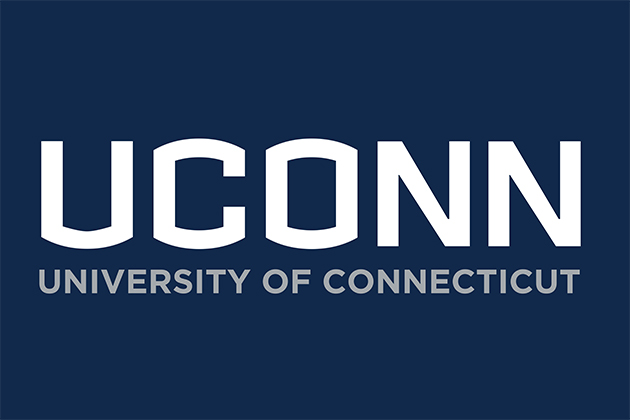UConn’s Board of Trustees adopted baseline FY18 spending plans on Wednesday to carry the University into the new budget year, but will meet again at a later time to adopt new versions once the General Assembly adopts a statewide budget.
UConn’s initial FY18 budgets for Storrs, the regional campuses, and UConn Health were created with the best information currently available. They still need updated figures for the final state allocation amount, fringe benefit expenses, and any ramifications that could occur if a tentative statewide labor deal is not adopted.
“A lot could change, and we commit to the board that when we know more, we will present revised budgets this summer and into the fall,” Scott Jordan, UConn’s executive vice president for administration and chief financial officer, told trustees Wednesday.
Despite the challenges, the FY18 baseline budget for Storrs and the regional campuses is balanced and avoids deficits due to the tight rein that UConn has placed on spending over the past year, including delays in filling open positions and many other cost-cutting measures, Jordan says.
The initial budget allows the University to continue its operations uninterrupted past July 1, while it awaits the new state budget.
UConn’s budget for fiscal year 2017, which concludes June 30, will end the year in balance largely due to cuts levied on all University departments, the slowdown of filling open positions, and employee wage freezes.
The FY18 budget avoids raising tuition above the rate that had already been approved in the four-year plan that went into effect in fall 2016.
And while enrollment growth has been a significant factor in increased tuition revenue over the last 20 years, enrollment is expected to remain largely flat in FY18 and FY19, with the exception of bumps upward at the new downtown Hartford campus and at UConn Stamford, where student housing opens in August.
The budget also assumes a $211.2 million state allocation to UConn for the coming year’s operating expenses.
Gov. Dannel P. Malloy had originally proposed that figure, but released updated information Monday that would provide $201.2 million in what he has termed a “resource allocation plan” that he proposes using through an executive order until a final budget is approved.
UConn hopes that its state allocation will be higher when the legislature passes a final budget, however.
The $1.34 billion budget for Storrs and the regional campuses relies on tuition for 29 percent of its revenue, followed by about 26.7 percent of its revenue coming from the state’s operating fund allocation. As recently as the year 2000, state support comprised 43 percent of UConn’s revenue.
“UConn is currently at a crossroads …,” said President Susan Herbst. “The decline in state support is causing UConn to shift from expanding academic and research strength to increase our contributions to the state’s economy to simply attempting to maintain our current position.”
Like other state agencies, UConn’s FY18 budget also will be significantly affected by the state’s tentative agreement with the State Employees Bargaining Agent Coalition (SEBAC) if labor units within the coalition approve the provisions.
UConn included those provisions as tentative assumptions in its budget, and would have to change the document significantly if the proposal is not adopted.
The SEBAC agreement includes savings for the state through increases in employees’ share of health care and pension costs, three furlough days in FY18 for those covered by the deal, a three-year wage freeze, and other factors.
Under university policy, non-contract UConn employees who are not covered by collective bargaining agreements receive raises similar to those in the unions and on the same schedule, so the wage freeze and furlough days would apply to them as well if the SEBAC agreement is approved.
That pact also avoids layoffs through 2021 for current state employees, in addition to the other provisions on raises, co-pay and health care costs, and related items.
The provision would prevent UConn and other state agencies from achieving cost savings through personnel reductions, and the no-layoffs assumption has been included along with the other SEBAC provisions in the baseline budget that UConn trustees adopted Wednesday.
Salaries comprise about 37 percent of UConn’s budget, and about 90 percent of its employees are covered by collective bargaining agreements.
Jordan said that while no one ever wants to initiate job reductions, the no-layoff clause would restrict UConn from making financial changes in a large segment of its budget, and therefore further cuts would have to come from areas such as capital projects.
He added that any notion that UConn doesn’t have personnel costs under control is incorrect: The workforce hasn’t grown in any significant manner nor have salaries, and managers are in their third year without pay raises.
In addition to the 37 percent of UConn’s budget that is allocated to salaries, more than 18 percent of overall expenses goes to fringe costs, which include retirement, health care coverage, FICA taxes for Social Security and Medicare, and UConn’s payment to help the state with its unfunded pension liabilities.
UConn lost $9.2 million in state funding in fiscal year 2017, receiving a state allocation of $220.7 million for operating costs – and then absorbing $6.3 million more in lost money from fringe rate reimbursement payments that are calculated based on the allocation, and which therefore dipped when that allocation fell.
UConn’s fringe benefit costs have increased by $100 million since FY11, largely to help the state retroactively fix its unfunded pension liabilities.
In FY17, UConn will pay an estimated $57.3 million due to the unfunded pension liability – money that otherwise would have gone to other needs throughout the University. The amount for FY18 is not yet known.
Herbst said that while UConn’s donors have been extremely generous, it is unfair to them and impractical to assume and expect their gifts to make up the difference for the lost state funds.
“People want to have the money they make in their lives connected to a place that’s going somewhere,” Herbst said, noting that philanthropy is usually targeted to building strength in particular programs or scholarships, not general operating expenses.
In all, UConn has sustained almost $80 million since 2011 in state reductions, lost fringe, and “fund sweeps,” in which the state takes money out of accounts for projects that have not yet started.
Jeremy Teitelbaum, UConn’s interim provost, emphasized that the University remains very strong in the academic realm, an enterprise that University leaders have vowed to protect despite the budget difficulties.
UConn has remained in the U.S. News & World Report’s Top 25 among public universities for the past several years, despite the funding cuts it has absorbed, and applications have reached record highs for the past several years – including those from record-high numbers of valedictorians and salutatorians.
The University also has budgeted $122.4 million in university-funded institutional financial aid to award to students, which comes in addition to state, federal, and private aid for which they may qualify.
This year’s proposed number is $10.7 million above the FY17 figure, with about $70 million of the $122.4 million earmarked for need-based aid.
Interest in the new UConn Hartford campus and the new student housing at UConn Stamford is also strong, the number of class offerings has been increased by 33 percent in recent years, and the University just graduated more students than ever before in its history.
However, Teitelbaum cautioned that continued budget challenges will chip away at UConn’s ability to maintain its position, and to attract researchers and scholars who are highly recruited by many institutions.
“This is very much a budget that is aimed at clinging to our accomplishments,” he said, “rather than moving forward dramatically as we would have hoped.”


